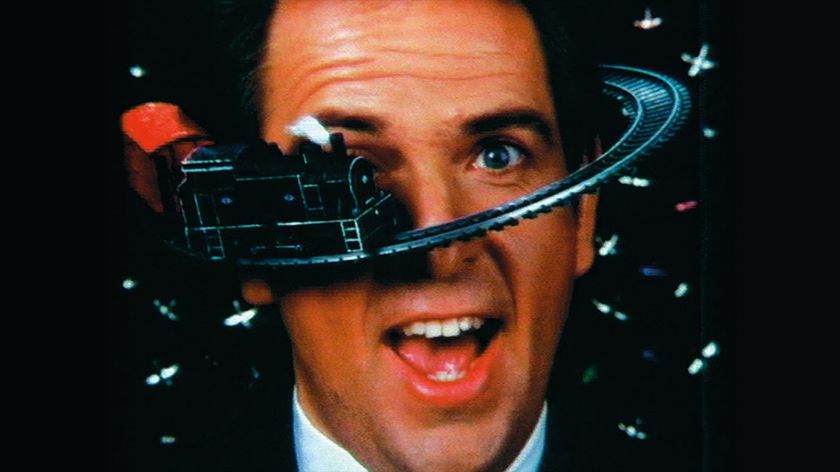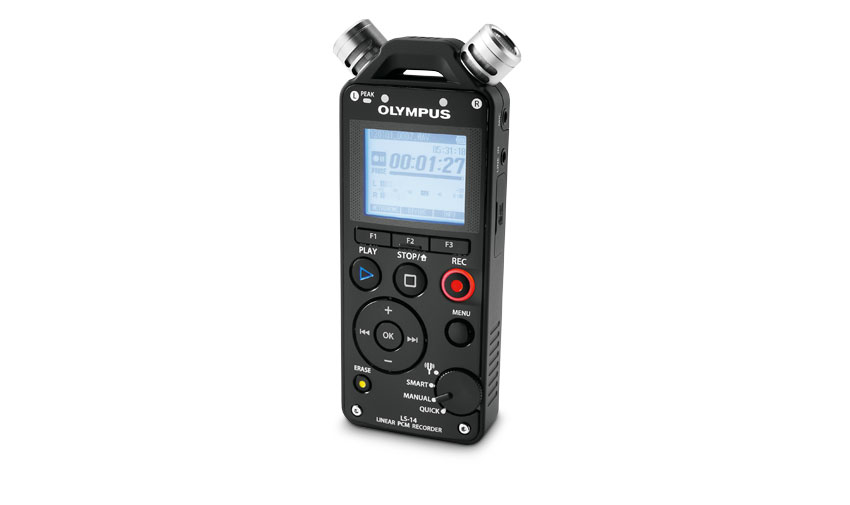MusicRadar Verdict
Obviously the LS-14 isn't an alternative to going into the studio, but it is a handy, relatively inexpensive way to ensure you capture those inspired moments of creativity without fail.
Pros
- +
Easy to use. Decent results. Smart mode is genuinely useful.
Cons
- -
Could be better quality.
MusicRadar's got your back
You bust out a mega groove at band rehearsals and when it comes to playing it again the following week you've completely forgotten your game-changing beat. The Olympus LS-14 digital recorder could put an end to such woes.
Build
The LS-14 features Olympus' TRESMIC system: three mics, two stereo directionals and a central omni-directional mic. The latter is in place to better capture bass frequencies in your recordings, boosting frequency range to 20Hz-200kHZ.
The recorder outputs in either WAV or MP3 format. It also comes loaded with features such as an instrument tuner, background noise filter and overdub options, the latter can be used to layer tracks instrument by instrument. The device has a plastic casing, but feels sturdy and reassuringly weighty.
Hands On
The LS-14 features several recording modes. To make things nice and simple we start with plain old Quick Mode, your basic 'press record and go'. We're using the device in our regular rehearsal space (four-piece band, drums, bass, guitar and vocals).
Using the stand clip provided we're able to easily mount the recorder to a mic stand and position it bang centre in the room, directly facing the drums and PA, with a guitar amp to the left and bass rig to the right.
"Turning on Smart mode, the drums are far crisper and guitars sit within the mix rather than overpowering everything"
We're going solely with the recorder, with no external mics plugged into the device. The result is so-so. The kit cuts through to an acceptable standard, but intricacies (particularly ghost notes) are lost amid distortion and plenty of top-end clipping.
Turning to the device's Smart setting, things rapidly improve. This allows the recorder's settings to be automatically tweaked after a predetermined amount of time (we went for 10 seconds). This means the device can judge which aspects of the sound need to be filtered and noise levels can be automatically adjusted.
In doing so we're greeted with a much better end product - drums are far crisper and guitars sit within the mix rather than overpowering everything in earshot. There's also very little background hiss that often plagues such recordings. There is still some distortion, but that is to be expected at this price point.
Recording with the central microphone on does give a general bass boost, but not enough of an improvement to make this feature a deal breaker, which is a shame as this is a potentially fantastic addition.
With so many options and setting adjustments available, there is bound to be an acceptable sound for pretty much all tastes, as long as the user realises that they'll get more of a rough sketch rather than a polished masterpiece.
Rich is a teacher, one time Rhythm staff writer and experienced freelance journalist who has interviewed countless revered musicians, engineers, producers and stars for the our world-leading music making portfolio, including such titles as Rhythm, Total Guitar, Guitarist, Guitar World, and MusicRadar. His victims include such luminaries as Ice T, Mark Guilani and Jamie Oliver (the drumming one).

"I believe I’ve got the last recording Jeff Beck ever did in the studios": Guitarist Mick Rogers thinks he's in possession of a piece of musical history

“If you want a good vocal, you gotta drink snake sperm”: Singer Jessica Simpson reveals the unusual drink that keeps her vocal cords in tip-top condition

“I was thinking at the time, if anyone wants to try and copy this video, good luck to them!”: How ’60s soul music, African rhythms and a groundbreaking video fuelled Peter Gabriel’s biggest hit











